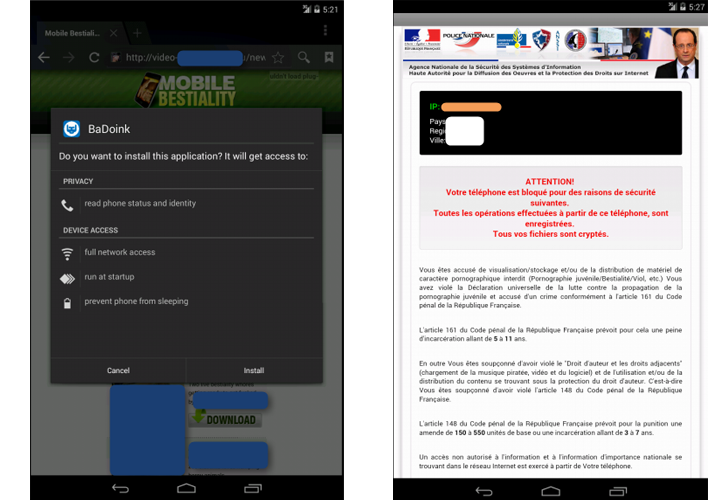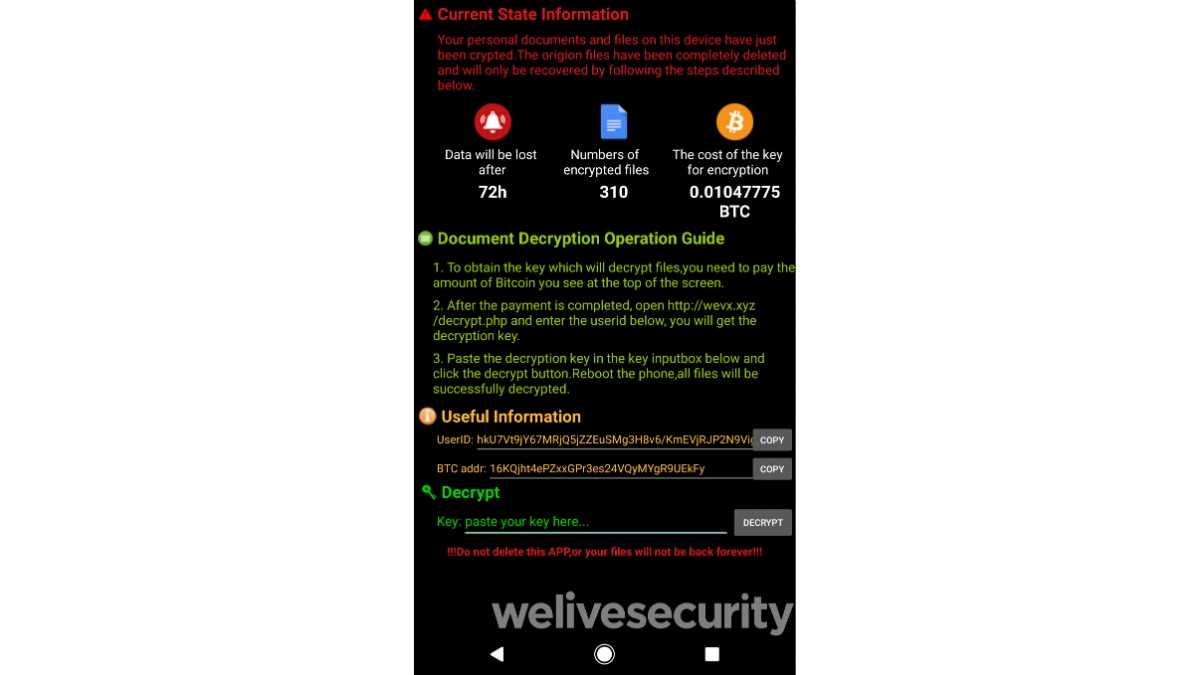

RANSOMWHERE ANDROID ANDROID
Removing FBI Ransomware from your Android device requires you to first remove administrative privilege from the app in its Flash Player guise. Any third party apps you have downloaded and installed are disabled, much as with booting into Safe Mode in Windows. With Safe Mode booted (you'll spot the "Safe Mode" legend in the bottom left of your display) only system apps will be running. You should be able to find the solution for your device with a quick web search. The ransomware announces a disabled activity alias for .MainActivity. Similarly, you might long-press Reboot to get the same result. 3- The signature tool uses an Android test certificate. You might, for instance, hold the power button, then long-press Power Off to display the safe mode dialogue. On some older devices such as the Samsung Galaxy S2, FBI Ransomware doesn't load quickly enough, meaning that you can disable it before it has loaded, as per this explanation.īooting Android into Safe Mode differs from version to version and across devices. The lack of access to MoneyPak cards internationally is reason enough to get the malware off your device should you have been hoodwinked into coughing up.)

RANSOMWHERE ANDROID CODE
Additionally, we also found a new self-propagation module that allows it to spread by sending SMS messages containing the shortened URL to all contacts on the compromised device.(Payment for this scam is via a GreenDot MoneyPak card, which must be purchased and pre-loaded with funds, and the code entered. With one of the world’s largest threat-detection networks, our security app protects against mobile malware while also helping you avoid phishing attacks and Wi-Fi threats. Last fall a ransomware named Cryptolocker infected more than 1000 computers. A trojan that has been infecting Android devices for two years has resurfaced as a full. Avast’s free Android security tool gives your phone the same ransomware-stopping power your PC enjoys. Mobile ransomware is continuously evolving. Two-year Old Android Malware Evolves from Spyware to Ransomware. In case of this new Koler variant, the malicious Android application arrives via a shortened bit.ly URL to a Dropbox location and pretends to be an image file. If the unsuspecting user downloads and installs the package, it will lock the user's screen, displaying a fake FBI warning page (see below), accusing the user of viewing child pornography. Android devices are vulnerable to ransomware, too. It was designed to target a specific Windows vulnerabilities to get its grasp on the system. Despite this fact, the mobile market is clearly one that ransomware operators would like to tap into and Koler is a step in that direction.
RANSOMWHERE ANDROID FULL
It is believed to be the mobile extension of the Reveton ransomware family. Ransomware has been a profitable venture in the PC world with the likes of Crytolocker, but is a relative newcomer on mobile devices, at least in part due to file restrictions in mobile operating systems which limit the ability of apps to access the full file system. While traditional ransomware encrypts the files on a user’s device, not all Android ransomware variants do so. Android Koler is a family of ransomware that targets Android users by locking up their mobile devices and demanding a ransom. Ransomware targeting Android often masquerades as a legitimate app, like the bevy of COVID-19-themed APKs that have emerged.


 0 kommentar(er)
0 kommentar(er)
